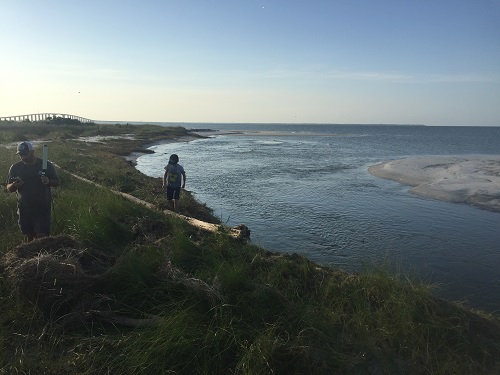
Sep 26, 2022 | Fish, Goniometer, News, Wildlife Monitoring
Marcus Drymon, Assistant Extension Professor at Mississippi State University Marine Fisheries Specialist and Dr. Greg Skomal, an accomplished marine biologist who we interviewed for Shark Week, were recently able to recover a lost shark tag thanks to NOAA’s Animal...

Sep 23, 2022 | Hardwares, Land Animals, News, Wildlife Monitoring
For over a decade, researchers have been working on improving radio telemetry devices for polar bears. In 2018, the U.S. Fish and Wildlife Service, the World Wildlife Fund, IDEO, and MistyWest teamed up to develop a new Argos-based polar bear ear tag. After two years...

Sep 21, 2022 | Hardwares, Herding, News, Oceanography, Meteorology, Hydrology, Climatology, Pollution, Smart Agriculture, Wildlife Monitoring
We are just few weeks away from the planned launches of two Argos-4 payloads, an advanced satellite instrument that will track the movement of wildlife, as well as critical environmental data around the world. Argos-4 will ensure the continuity of the Argos-2 &...

Sep 12, 2022 | Birds, News, Wildlife Monitoring
The Hudsonian godwit is a migratory bird travelling a marathon, transoceanic flight from South America to Arctic or sub-Arctic North America. Their flight paths tracked using Argos, in relation with variable winds, can help understand how they travel such long...

Sep 1, 2022 | Marine Animals, News, Wildlife Monitoring
At the end of March 2022, Cristina Rodríguez-Cabello researcher of the Spanish Institute of Oceanography (IEO) in Santander (Spain), was working at her Centre when she received an unexpected yet exciting call from France. One of the archival tags she had attached to a...

Aug 31, 2022 | Fish, Goniometer, News, Wildlife Monitoring
Lake charrs are freshwater fish found in the Laurentian Great Lakes (North America), among others. They nearly disappeared, but restoration was successful at least in Lake Superior. Understanding the different habitats of the lake charr ecotypes can help in restoring...







